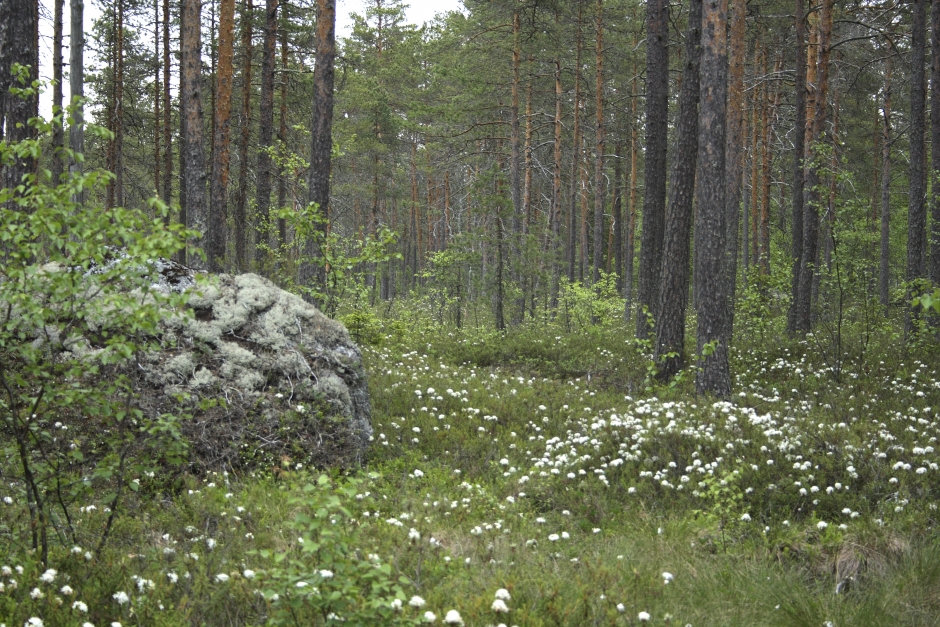Pine mires

Pine mires are peatlands vegetated by pine trees, marsh Labrador tea and bog bilberry. Common haircap moss and lichen retain moisture in the mire and vegetation growth occurs predominately in the top layers, below which peat forms from decomposing moss. Typical plants growing in pine mires are heather, hare’s-tail cottongrass, cranberry and various species of sundews. Sundews belong to a genus of small carnivorous plants that supplement the mire’s scarcity of nutrients by catching insects. The damp environment is home to mosquitoes and horse flies and various species of birds, such as the tree pipit, that feed on them.
To facilitate forestry in peatlands, pine mires have been diked and most mires are at least in part affected by such practices. Diking dries the soil, allowing trees to grow and traditional mire plants are replaced by others that thrive in drier, shadier environments. Pine mires, albeit rare in Vaasa, can be found in Öjen and in the Sundom archipelago.
Moving in pine mires during spring can be difficult due to meltwater and mosquitoes and horse flies can be a nuisance during summer. However, the amount of mosquitoes decreases drastically during autumn around the time when the cranberries ripen. Many opt for picking them after the first frost, as they are not as sour. Snow covered mires offer attractive opportunities for cross country skiing.
